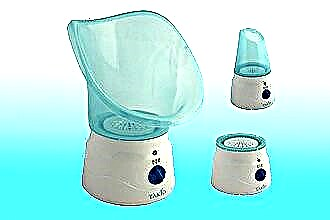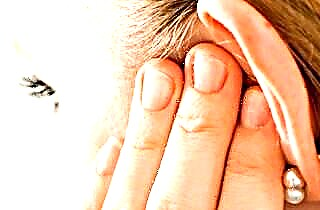 If a yellow or green discharge appears, it is worth suspecting the development of an inflammatory process in the nasal passages or paranasal cavities. How to treat green snot?
If a yellow or green discharge appears, it is worth suspecting the development of an inflammatory process in the nasal passages or paranasal cavities. How to treat green snot?
To cope with the disease, it is necessary to use several drugs with different mechanisms of action and clinical effect.
Only in this way can pathology be defeated.
Why does green discharge appear?
Thick green snot in adults in most cases indicates the development of infectious rhinitis or sinusitis. There are several mechanisms for the onset of diseases:
- the addition of a bacterial infection is possible against the background of improper treatment of a cold. Due to a decrease in local immune defense, the body becomes more susceptible to pathogenic microorganisms, which predisposes to infection;
- activation of opportunistic flora. Prolonged nasal congestion, swelling of the tissues of the nasal passages disrupts ventilation in the paranasal cavities and impedes the outflow of mucus. The consequence of the accumulation of mucous secretions is the intensive reproduction of pathogenic microbes, the appearance of purulent snot;
- exacerbation of a chronic infectious and inflammatory process. In the presence of sluggish sinusitis, even a slight hypothermia or acute respiratory viral infection leads to the activation of "dormant" microorganisms in the paranasal cavities;
- ozena. The progression of the atrophic form of rhinitis is accompanied by the destruction of cartilaginous, bone structures in the nose and the appearance of dry crusts, thick discharge with a putrid odor.
Green snot in an adult is rarely the only symptom of the disease. There are often several clinical signs of the disease.
Sinusitis can be manifested by bursting pressure in the paranasal cavities and severe nasal congestion, while there may be no runny nose. Purulent discharge in this case accumulates in the sinuses.
Symptom complex of diseases:
- snoring at night, caused by a violation of the patency of the nasal passages, in connection with which a person has to sleep with his mouth ajar. Bubbling breathing may sometimes appear. It is associated with the drainage of purulent mucus down the nasopharynx into the throat;
- cough that appears in response to irritation of the laryngeal mucosa by mucus flowing down the posterior pharyngeal wall;
- severe nasal congestion;
- purulent rhinitis;
- nasalness;
- Difficulty nasal breathing;
- a large number of dry crusts in the nasal passages;
- putrid smell;
- lack of smell;
- change in taste;
- hyperthermia. In the acute course of the disease, fever can reach 39 degrees, which indicates an infectious process. During periods of remission in chronic sinusitis, the temperature can be kept at 37.2 degrees;
- headache;
- malaise;
- decreased appetite;
- pain when pressing on points located above the paranasal cavities.
Treatment directions
Green snot takes a long time to heal, however, if all the recommendations are followed, you can achieve complete recovery without complications and chronic inflammation.
 In addition to medications, the therapeutic complex includes the correction of the life regime and the surrounding living conditions. To facilitate the general condition, it is necessary:
In addition to medications, the therapeutic complex includes the correction of the life regime and the surrounding living conditions. To facilitate the general condition, it is necessary:
- drinking plenty of fluids. Adequate intake of fluid allows you to reduce the viscosity of purulent secretions, facilitate their outflow and accelerate the elimination of toxins from the body. To do this, you need to drink herbal teas, unsweetened compotes, fruit drinks, still mineral water;
- proper nutrition. During periods of illness, the body needs additional intake of vitamins and energy substances. In this regard, one should abandon fast food, canned foods, soda water, fatty, fried foods, and also limit the use of sweets and muffins;
- getting enough sleep. To conserve energy, the body needs proper rest, since it is exhausted and weakened during illness. The stability of the immune system and the strength of resistance to disease depend on this;
- lack of stress. Strong experiences negatively affect the state of immunity, so you need to be less nervous;
- regular walks in the park area, places with clean air. Walking provides an opportunity to saturate the body with oxygen and provide natural cleansing of the nasal passages;
- wet cleaning in the room is necessary to reduce the concentration of microbes, dust and allergens in the air;
- frequent airing; humidification of air in the room. To facilitate nasal breathing, it is recommended to maintain humidity at 55%;
- the temperature in the room should not exceed 19 degrees.
Here is a list of medications that can help get rid of green snot:
- mucolytics such as Sinupret, Rinofluimucil;
- antiseptics (Cameton, Isofra);
- salt solutions (No-salt);
- vasoconstrictor (Rinostop, Nazol).
Additionally, antihistamines may be prescribed to reduce swelling of the mucous membrane, antibiotics and immunomodulators to strengthen the immune defense.
Mucolytics
 The composition of Sinupret includes primrose flowers, elderberry, as well as sorrel, verbena, gentian. Due to its natural origin, the drug has a mild decongestant, anti-inflammatory, immunostimulating, antiviral and mucolytic effect. Clinically, this is manifested by an improvement in the outflow of mucus by reducing its viscosity, as well as facilitating nasal breathing.
The composition of Sinupret includes primrose flowers, elderberry, as well as sorrel, verbena, gentian. Due to its natural origin, the drug has a mild decongestant, anti-inflammatory, immunostimulating, antiviral and mucolytic effect. Clinically, this is manifested by an improvement in the outflow of mucus by reducing its viscosity, as well as facilitating nasal breathing.
The drug is not prescribed for hypersensitivity and exacerbation of peptic ulcer of the digestive tract.
Sinupret should be taken two tablets three times. The tablets should be swallowed whole with a little water. From the age of six, the medicine is taken three times a tablet.
In rare cases, dyspeptic disorders are observed in the form of pain in the stomach area, diarrhea, nausea, and vomiting. It is also possible that a skin rash, itching sensations and swelling of the face, as manifestations of allergies, appear.
Sinupret in the form of a drip solution contains ethanol, which must be taken into account when prescribing to a child and pregnant women.
Antiseptics
Cameton is available in aerosol form and has antimicrobial, anti-inflammatory and mild analgesic effects.
The medication is not used in the treatment of a child under five years old, as well as in the presence of an individual intolerance to its components.
The solution is sprayed topically onto the mucous membranes of the nasal passages. 2-3 sprays should be done once. The frequency of use can be up to four times a day.
The duration of the therapeutic course is 6-10 days. The maximum duration of use of Cameton should not exceed two weeks. In most cases, Cameton is well tolerated. Signs of an allergic reaction are rare. It is manifested by tickling, baking, itching sensations in the nasopharynx. It is also possible tissue edema, dryness of the nasal mucosa, shortness of breath, skin rashes.
Saline solutions
 Saline solutions are considered the best means for the prevention and treatment of pathologies of the nasopharynx. They are distinguished by their safety and good effect. The group of saline solutions includes:
Saline solutions are considered the best means for the prevention and treatment of pathologies of the nasopharynx. They are distinguished by their safety and good effect. The group of saline solutions includes:
- Saline solutions;
- Marimer;
- Dolphin;
- Aqua Maris;
- Aqualor;
- Morenazal;
- Saline.
They come in the form of rinsing solutions or drips into the nasal passages. The action of the drugs is:
- moisturizing the mucous membrane;
- cleansing the inner surface of the nose;
- strengthening local defenses;
- facilitating the removal of dry crusts;
- a decrease in the viscosity of purulent discharge;
- relief of nasal breathing.
When using a solution for prophylactic purposes, you need to remember the risk of disrupting the microflora in the nasopharynx. If the recommended doses and frequency of use of the drug are exceeded, the risk of changes in the quantitative composition of microorganisms that live in the nasal cavities increases.
Normally, they do not cause disease, however, with a slight immunosuppression, the development of an inflammatory process is possible. Theoretically, one contraindication can be distinguished. It concerns individual intolerance.
When using a solution for drip dosing, adults are recommended two drops daily up to four times. The duration of the course is 4 weeks.
Spray solutions can be applied two sprays up to four times a day.
Overdose cases were not registered. Adverse reactions relate to allergic manifestations.
Vasoconstrictor drugs
The main active ingredient of Rinostop is ximetazoline. The duration of the vasoconstrictor effect is up to 7 hours. The action of the drug is aimed at reducing tissue edema, facilitating the outflow of thick mucus from cavities, as well as restoring nasal breathing.
Recommended one spray three times a day. For adults, Rinostop is available in the form of a spray with a concentration of 0.1% solution, a child should use drops of 0.05%.
The agent is contraindicated in case of hypersensitivity and taking antidepressants. Caution must be observed for people with severe diseases of the cardiac system, pronounced atherosclerotic vascular lesions, prostate adenoma, diabetes.
Allergies, tachycardia, insomnia and dry mucous membranes are sometimes observed.
Folk remedies
Folk remedies are only part of a comprehensive treatment, since no natural medicine can completely cure a purulent rhinitis.
Here are some proven recipes:
- garlic. It is used for nasal instillation and inhalation. To prepare the medicine, it is enough to peel, chop the garlic, squeeze out the juice, dilute it 1: 2. Dripping two drops three times. If a burning sensation occurs, immediately wash the mucous membrane with boiled water or saline. Inhalations are carried out twice a day by inhaling the garlic aroma;
- aloe juice (diluted with water 1: 1 or in concentrated form). If previously used aloe juice, it is dripped two drops twice in pure form;
- 15 g of a mixture of an equal amount of coltsfoot, linden, raspberry leaves should be poured with boiling water in a volume of 280 ml for 20 minutes. As soon as the infusion has cooled slightly, you can begin to rinse the nasal passages. The procedure is repeated twice a day;
- 30 g of chamomile, St. John's wort must be mixed, pour 270 ml of boiling water, wait a quarter of an hour. Instill three drops three times daily;
- celandine (stems) need to be crushed, squeezed out the juice. Then 2 drops of juice should be dissolved in 180 ml of boiled water, rinse the nasal passages three times daily.
Honey and beets are usually not used in the treatment of infectious rhinitis, as they become a breeding ground for microbes and contribute to their reproduction.
In order to choose the right drugs for the treatment of purulent rhinitis, you need to take into account the cause, the characteristics of the course of the disease, as well as the presence of concomitant diseases. Often, purulent snot is a consequence of a long-term current rhinitis, so you need to treat a cold in a timely manner and prevent complications.



